Moderate overlap front: original test
Rating applies to 2009-14 models built after November 2008
Tested vehicle: 2009 Hyundai Genesis 3.8 4-door
The Hyundai Genesis was introduced in the 2009 model year.
Two tests of the Genesis were conducted. In the first test, the dummy's head hit the steering wheel through the airbag, producing a high head acceleration. Also, forces on the dummy's right lower leg, knee, and foot indicated that injuries would be likely to the leg and possible to the knee and foot. In response, Hyundai modified the airbag and added padding behind the knee bolster in the area of the push-button ignition switch. In the second test, the right leg/foot injury rating improved to good. Most injury data from the head were not obtained, but after the Institute reviewed comparable test data from Hyundai, the head/neck injury risk was rated good in the second test.
The airbag and knee bolster modifications apply to all 2009 and later models manufactured after November 2008. (Information about when a specific vehicle was manufactured is on the certification label typically affixed to the car on the driver door or adjacent B-pillar.) The cars manufactured before and after being modified are rated separately, except that the structure ratings for both vehicles are based on both Institute tests.
| Evaluation criteria | Rating |
|---|---|
| Overall evaluation | |
| Structure and safety cage | |
| Driver injury measures | |
| Head/neck | |
| Chest | |
| Leg/foot, left | |
| Leg/foot, right | |
| Driver restraints and dummy kinematics | |
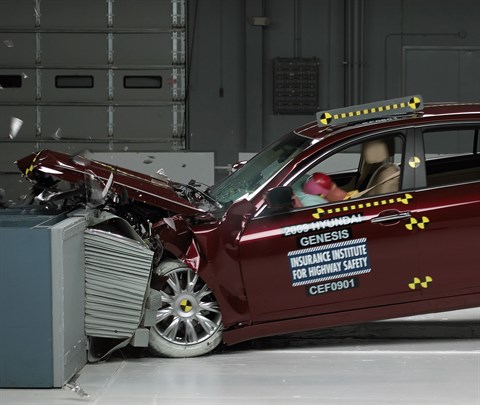
Action shot taken during the second of two frontal offset crash tests.
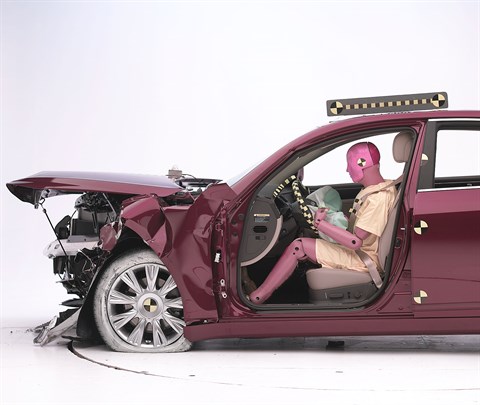
In each test, the dummy's position in relation to the steering wheel and instrument panel after the crash test indicates that the driver's survival space was maintained well (second test shown).
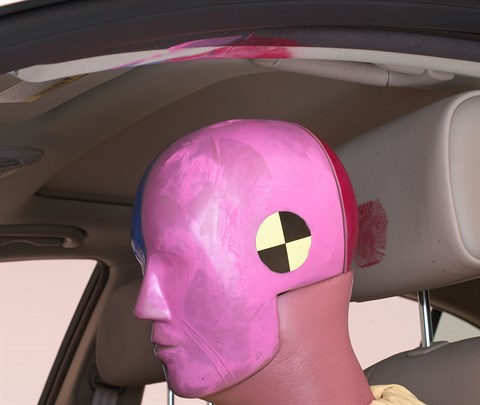
Smeared greasepaint indicates where the dummy's head hit the roof rail during rebound in the second test.
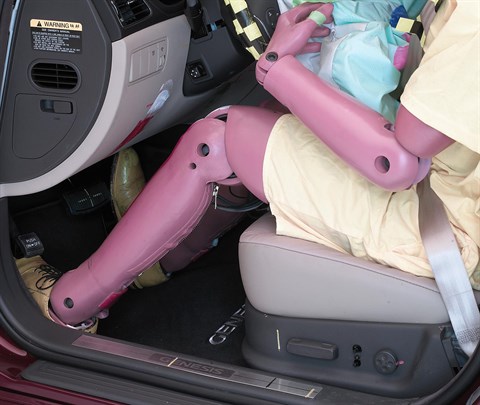
Intrusion into the driver's space was minimal, and all leg and foot injury measures were low in the second test.
Side: original test
Rating applies to 2010-14 models built after January 2010
Tested vehicle: 2010 Hyundai Genesis 3.8 4-door with standard front and rear head curtain airbags and standard front and rear seat-mounted torso airbags
The Hyundai Genesis was introduced in the 2009 model year. Beginning with 2010 models built after January 2010, design changes were made to the roof structure and B-pillar to improve occupant protection in rollover and side impact crashes. (Information about when a specific vehicle was manufactured is on the certification label typically affixed to the car on the driver door or adjacent B-pillar.)
Two side tests of the modified 2010 Genesis were conducted, one by the Institute and the other by Hyundai. Ratings are based on both tests.
| Evaluation criteria | Rating |
|---|---|
| Overall evaluation | |
| Structure and safety cage | |
| Driver injury measures | |
| Head/neck | |
| Torso | |
| Pelvis/leg | |
| Driver head protection | |
| Rear passenger injury measures | |
| Head/neck | |
| Torso | |
| Pelvis/leg | |
| Rear passenger head protection | |
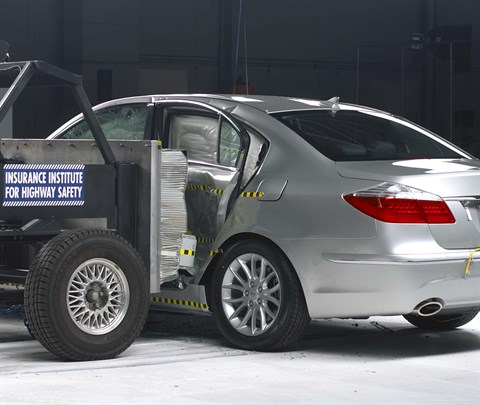
View of the vehicle and barrier just after the Institute's crash test.
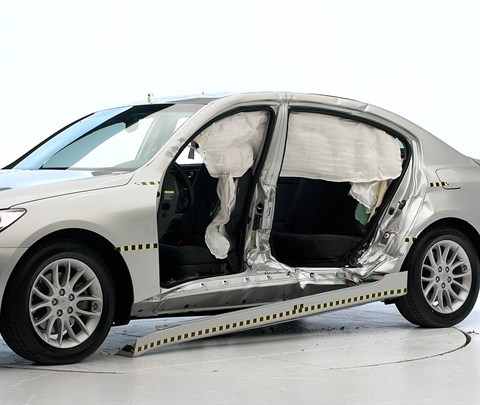
View of the vehicle after the crash with doors removed, showing the side airbags and damage to the occupant compartment (Institute test car shown).
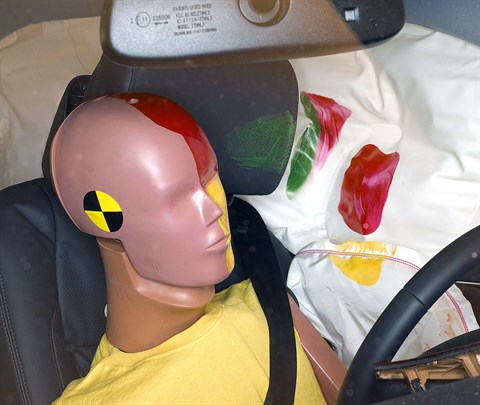
Smeared greasepaint shows where the driver dummy's head was protected from being hit by hard structures by the side airbags in the Institute's test.
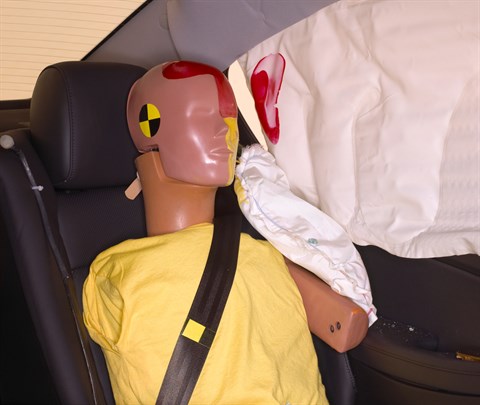
Smeared greasepaint shows where the rear passenger dummy’s head was protected by the side airbags.
Roof strength
Rating applies to 2010-14 models built after January 2010
Tested vehicle: 2010 Hyundai Genesis 3.8 4-door
| Overall evaluation | |
|---|---|
| Curb weight | 3,862 lbs |
| Peak force | 19,000 lbs |
| Strength-to-weight ratio | 4.92 |
Head restraints & seats
Seat type: Power leather seats AHR
| Overall evaluation | |
|---|---|
| Dynamic rating | |
| Seat/head restraint geometry |
About the head restraint & seat test
Currently, IIHS tests apply only to front seats.
